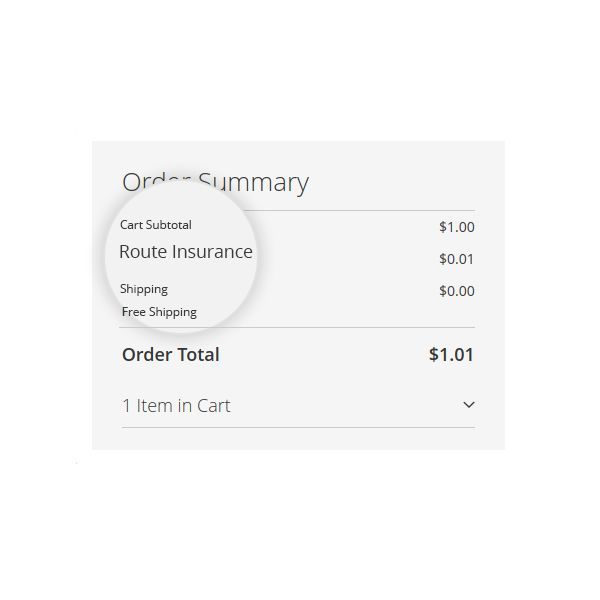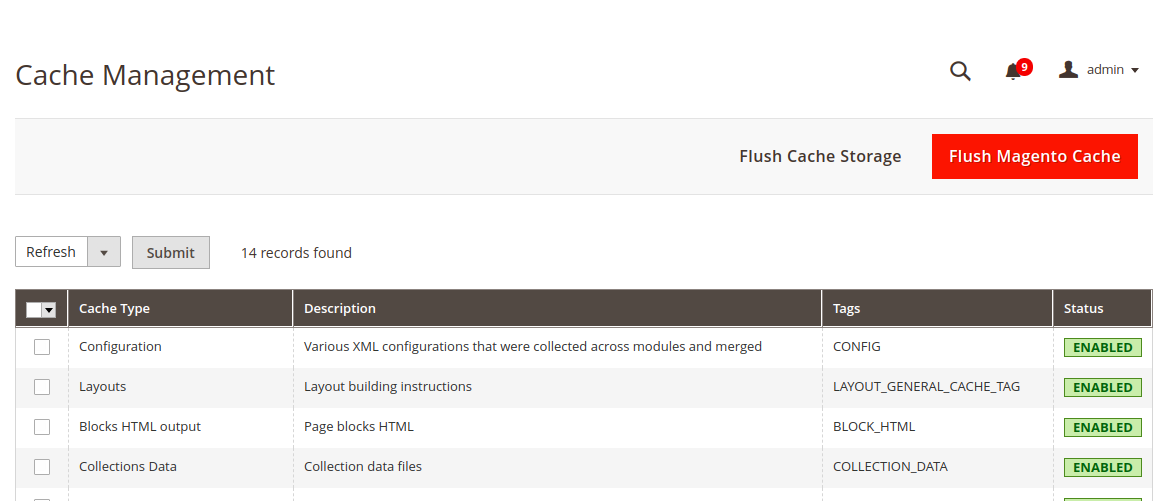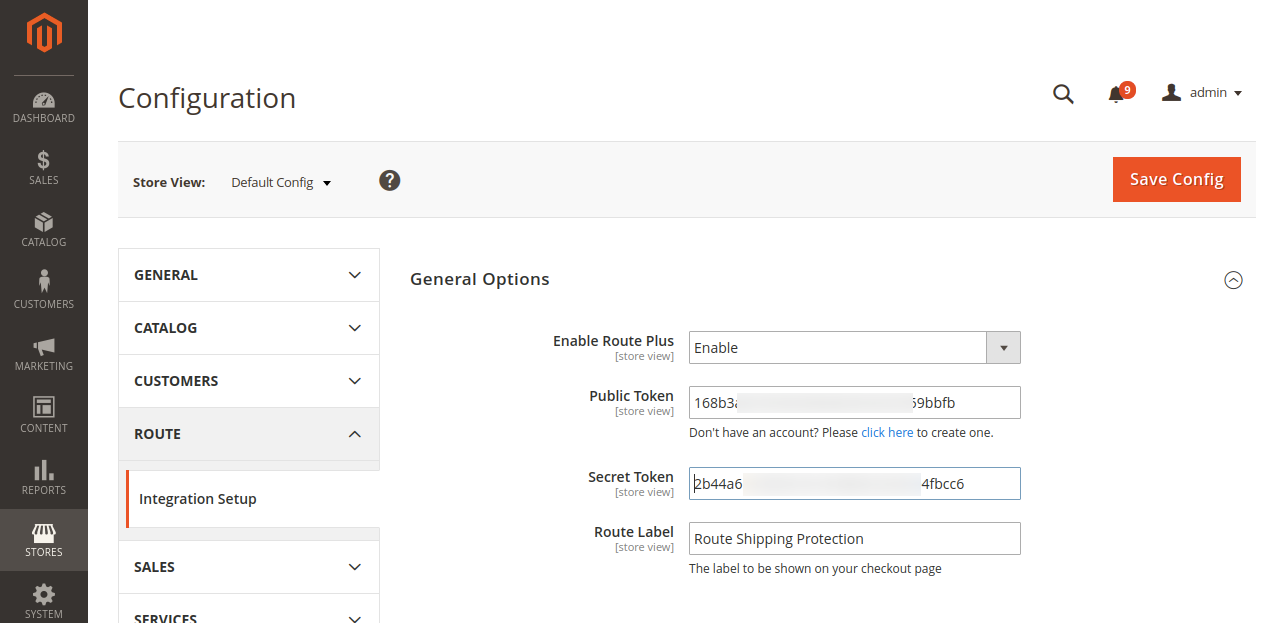Introduction
Route has developed a Magento Extension that adds secure shipping insurance to your orders. The
extension has been tested on Magento 2.0, 2.1, 2.2 and 2.3.
If you are having issues with our extension please reach out to our customer support.
Click here to get help.
The Route Shipping Insurance option simply sits on your checkout page, adding a layer of 3rd
party trust to your site while improving your customer's shopping experience.
Route instantly protects your store, and your customers while covering losses, keeping more
revenue in your pocket and your customers happy.
Guide for Route Extension installation
Magento Marketplace
After purchasing our extension from Magento Marketplace, copy the component name of our extension
in the My Purchases page.
Currently: route/route-m2
Make sure you have composer set up with your access key provided by Magento Marketplace.
In your project root folder run the following command to install our extension:
composer require "route/route-m2"
You should see the following output:
home@localhost:/var/www/magento_root_folder$ composer require "route/route-m2"
Using version ^1.0 for route/route-m2
./composer.json has been updated
Loading composer repositories with package information
Updating dependencies (including require-dev)
Package operations: 1 install, 0 updates, 0 removals
- Installing route/route-m2 (1.0.5): Downloading (100%)
Writing lock file
Generating autoload files
Run the bin/magento setup:upgrade command, and you should see the following:
home@localhost:/var/www/magento_root_folder$ bin/magento setup:upgrade
Cache cleared successfully
File system cleanup:
/var/www/magento_root_folder/generated/code/Composer
/var/www/magento_root_folder/generated/code/Magento
/var/www/magento_root_folder/generated/code/Symfony
/var/www/magento_root_folder/pub/static/deployed_version.txt
/var/www/magento_root_folder/pub/static/frontend
/var/www/magento_root_folder/var/view_preprocessed/pub
Updating modules:
Schema creation/updates:
Module 'Route_Route':
Schema post-updates:
[..]
Module 'Route_Route':
Data install/update:
[..]
Module 'Route_Route':
Data post-updates:
[..]
Module 'Route_Route':
Nothing to import.
Route has been successfully installed.
How to Setup your Extension
-
After plugin installation, go to the Magento Admin side and navigate to System ->
Cache Management. Click on Flush Magento Cache.
-
After you clear the cache, sign out and sign in back to the admin.
Add Merchant Tokens
If you do not have merchant tokens, please sign up
here.
You should have received three tokens from our team. A public token, a production secret token,
and a test secret token.
The test secret token must be used if you're planning to place test orders only.
Route Plus
Route Plus enables the insurance checkbox to be displayed on your checkout page.
You have the option to disable the insurance option and only send us the order and tracking
information.
To disable the Route Plus, change the select field to No.
Public and Secret Tokens
The public token is used to calculate the insurance amount on your checkout page.
The secret token is used to send the order and shipping information to Route's API.
The test secret token must be used if you're planning to place test orders only.
Apply Default Insurance
To apply default Route insurance for all products navigate to
Stores > Configuration
> Route > Integration Setup , Select 'Opt-out' from default setting dropdown for
preselecting route insurance checkbox during checkout otherwise select 'Opt-in' for not preselecting
route insurance checkbox.
Route Label
You can change the text displayed on at your checkout page. By default, the text is going to be
Route Shipping Protection.
Order Confirmation
You can check if an order was placed using Route Insurance by navigating to Sales ->
Orders and then selecting a specific order.
If an order was placed adding Route, you will see the fee added to the order summary.
You can also see the Route API calls in the Comments History section.
Widget Block / Shortcode
Route provides a widget block/shortcode if your store uses a custom checkout system, or if you
need to place the Route checkbox in another page such as a slide cart.
CMS / HTML
When editing the page in the CMS, you can add the Route Widget by adding the following block
code:
{{widget type="Route\Route\Block\Widget\Widget" type_name="Route Widget"}}
This code will render the Route checkbox wherever you add it.
PHP
You can also render the checkbox in any PHP/PHTML file. You can add the following code to your
file:
<?php echo $this->getLayout()->createBlock("Route\Route\Block\Widget\Widget")->toHtml(); ?>
Custom Line Item Integration
If you use a custom checkout system, or if Route is not showing up on your checkout page, Route
provides three different solutions to fix this issue:
JSON response
You can make a request to get the JSON object containing the line item information.
Endpoint: /route/index/routeLine?format=json
Response:
{
route: {
label: "Route Insurance",
amount: 0.98,
currency: "USD",
currency_symbol: "$"
}
}
You can parse this JSON object and then add Route to your checkout page.
HTML output
The response will return a HTML snippet that can be appended to your checkout page. Since it
returns a generic HTML code, you probably need to add some CSS code to customize its style.
Endpoint: /route/index/routeLine?format=html
Response:
<div class="route">
<span class="label">Route Shipping Protection</span>
<span class="amount">$1.23</span>
</div>
PHP
The PHP function will return an array containing the label and the amount to be displayed,
similar to what the JSON object returns. You can call this function and then append it to your
line items.
Add the Route Helper to your constructor:
public function __construct(
[...]
Route\Route\Helper\Data $helper,
[...]
)
{
[...]
$this->_helper = $helper;
[...]
}
Use:
<?php $this->_helper->getRouteLine(); ?>
Output:
[
'label' => 'Route Shipping Protection',
'amount' => 1.23
'currency' => 'USD'
'currency_symbol' => '$'
]
Removing Legacy Version
Due to incompatibility issues, you must completely remove the old version of Route.
In order
to do this, you should remove the following folders:
- app/code/Route
- app/code/Routeapp
Please make sure you have cleared the cache after removing the files.
After clearing the cache, please run the following command:
php bin/magento setup:upgrade










